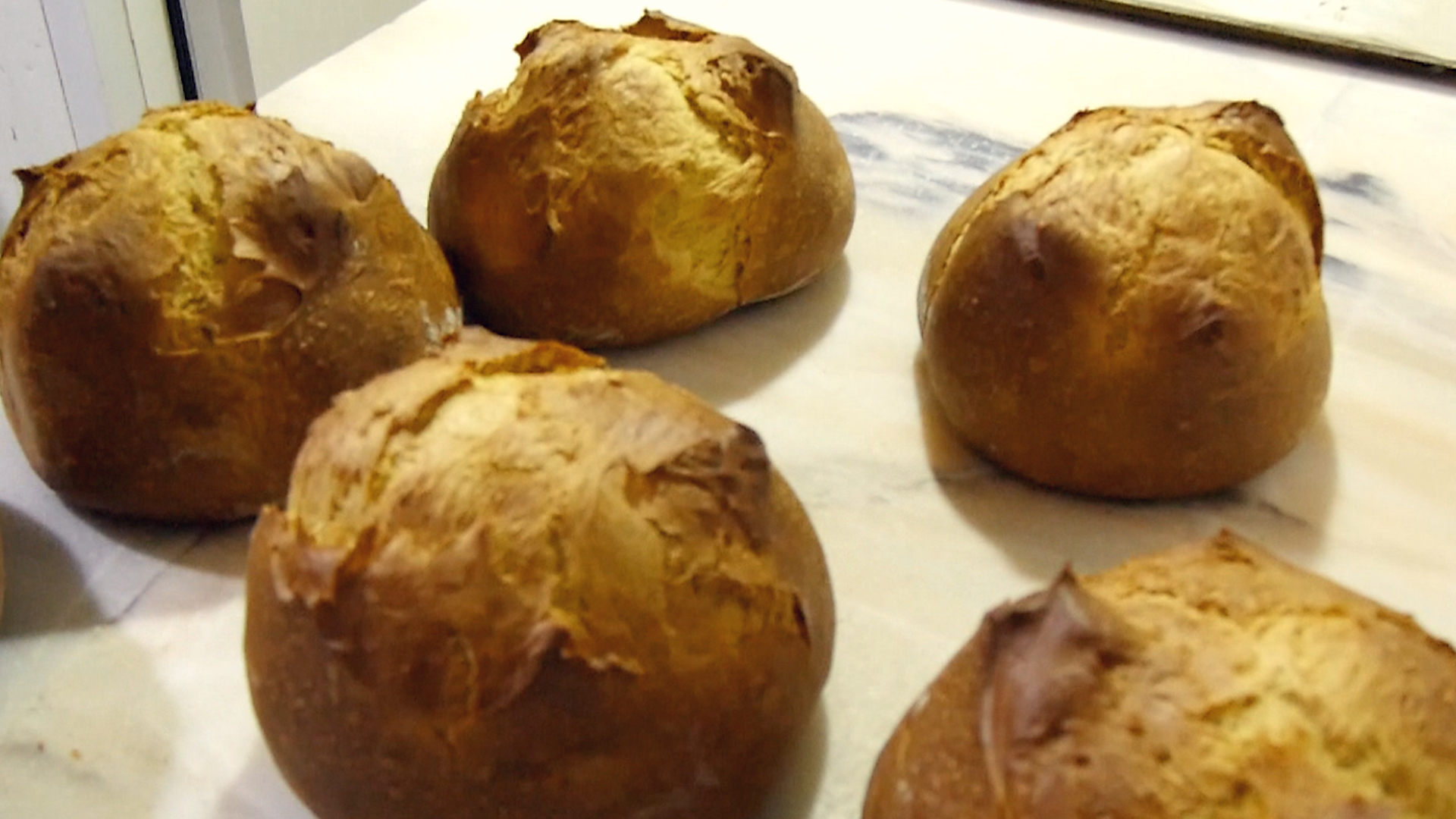Em Castro Daire, todos conhecem o tradicional bolo podre, que era feito pela Páscoa. Hoje em dia encontramo-lo em qualquer altura do ano. No Inverno, por exemplo, é excelente. Visitei a pastelaria Forno da Serra para ver como fazem o bolo. A minha anfitriã, Natália, foi explicando que no tempo dos seus pais cozia-se apenas uma vez por semana, mas agora coze-se muitas mais. O sabor do bolo podre é suave e muito particular. Recomendo absolutamente.
A Confraria do Bolo Podre e Gastronomia do Montemuro tem vindo a promover e a salvaguardar o bolo e a sua história. O método de preparação é de facto parecido com o de fazer pão, e provavelmente será um doce descendente da fogaça. Curioso é também o facto de Natália aproveitar as migalhas do bolo podre para fazer um magnífico gelado. Se víssemos mais vezes esta criatividade estávamos muito melhor. Enquanto estamos com tempo frio, aproveite para conhecer o bolo podre de Castro Daire, ainda quente do forno ou, dias depois, ligeiramente torrado.
***
In Castro Daire, everybody knows the traditional “bolo podre”, which used to be made in Easter. Today, we can find it all year round. In winter, for instance, it is excellent. I visited pastry shop Forno da Serra to see how they make this cake. My host, Natália, explained to me that, in the times of her parents they used to bake it once a week, but now she bakes it many more times. The flavor of the bolo podre is soft and very particular. I vividly recommend it.
The Confraria do Bolo Podre e Gastronomia do Montemuro (Fraternity of Montemuro Bolo Podre and Gastronomy) has been promoting and safekeeping the cake and its history. The method of preparation is in fact very similar to the making of bread, and it probably derives from “fogaças”. It is also curious that Natália uses its crumbs to make a magnificent ice cream. If we had more examples of such creativity, we would be much better off. While the weather is cold, have some Castro Daire bolo podre still hot from the oven or, a few days later, slightly toasted.
PUBLICIDADE




